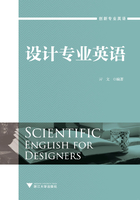
2.1.6 副词
1)副词在一个句子中作表语,主要用来表示状态。
例句:Transistor B is on.
译文:三极管B是通的。
2)副词在句中也可以作补足语,用来表示状态。
例句:This signal can make Transistor Y off.
译文:这个信号可以使三极管Y关闭。
3)副词在句中也可以作定语,但是这时它只能后置。
● 某些表示地点的副词,常见的有above, below, here, there, around, nearby, up, down, on等。
例句1:The two principles below are very useful.
(=The following two principles ...
or he two principles which follow ...)
译文:下面的这两个原理非常有用。
例句2:The tribe must keep in touch with the world around.
译文:这个部落必须和周围的世界保持联系。
例句3:The capacitance(电容)of a capacitor depends on the size of the plates and their distance apart.
● 某些表示时间的副词,常见的有now, then, today等。
例句:The challenge now is how to solve the puzzle.
●“数量状语+副词(apart, away等)”的形式。
例句1:WeChat enables one to establish contact with the people thousand miles away.
例句2:This type of instrument puts the keys in two wells(凹槽)half a shoulder distance apart.
例句3:The scientists 100 years ago could not understand that.
例句4:The designer moves forward from this point to a point a little further on.